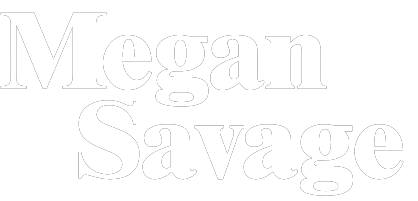Produce high-return Social Media Videos in 2024
We are in the age of short attention spans, non-stop scrolls, and constant competition for user’s attention. When creating video’s for social media ads + organic posting to platforms such as TikTok or Instagram, it’s important to keep this in mind, and ensure that your editing styles are optimized for the platforms.
The key when editing videos is this: keep what you need, and nothing you don’t. The best performing videos for this year are ones that are quick, to the point, and fast paced. When editing your video, keep this in mind with all of the elements:
Video Dimensions
The Hook
The Visual Cuts
Editing Your Audio
If you’re shooting on your phone, the best app I recommend editing with is CapCut, which enables you to edit down to the millisecond, and also is great for splicing up your audio.
FORMATTING YOUR VIDEO:
Before getting in to the editing themselves: ensure that your video dimensions are fit for the platform. This can greatly impact performance, and is crucial for both paid and organic formats.
For reference:
Instagram & TikTok: 9 x 16 Instagram organic posts no longer register videos as 1x1 or 4x5 (unless they’re in a carousel). Always edit your videos to fit 9 x 16.
Instagram / Facebook Ads: 9x16, 4x5, 1x1 (1080px x 1080px). It’s better to have 9x16 fit, and have a white border on the 1x1. But the tighter the crop, the better.
TEXT GUIDELINES:
When adding text to your videos, ensure that you’re leaving at least 15% of white space around all of the sides of your video. Not only is this for aesthetic reasons, but more importantly this ensures that your text does not get cut off. Platforms such as Tiktok and Instagram now have videos as full-screen, but still have navigation buttons throughout the page.
See examples below for reference of the types of icons and text that could potentially get in the way:
THE HOOK
The first 0.5 second to your video is crucial to the success of your video. Make sure that your audio starts at the very beginning of the video, and there is an element of movement right away. We’re not taking any pauses in 2024.
What to do:
Start your video with a thought-provoking, assertive one liner.
“I love my cat, but I hate…”
“I hate winter”
“I’ve wasted so much money on…”
Showing the end product of a before + after
This sounds counterintuitive, but showing the aspiration adds to the curiosity of the video. If this is interiors for example, showing the “AFTER” makes the viewer want to see if they can attain the same result.
Quick zooms or pans on to the products or theme of what you’re saying
Opening a door to intro your setting
Looking straight into the camera while sharing your hook, almost uncomfortably close to the camera (I know, it’s weird. But it works)
Remember: the faster you can get your point across, the better.
What not to do:
Have a slow start:
Make sure you start talking or have element of movement within the first 0.1 seconds of your video.
Start your video with “hey guys” “TikTok made me” “you guys have to try…”
This wastes time and doesn’t have a unique edge to it.
It also automatically sounds sponsored, branded, and out of touch.
Having a very posed posture, and your camera set up with a tripod.
If you’re new to filming social media content, I’d recommend against a white wall and a tripod. This is structured, forced, and you immediately go in to presentation mode. Instead, try walking with your phone.
YOUR VISUAL CLIPS:
If you have a video that has an element of story-telling, make sure that the cuts are quick and efficient. Any pause in the video will lose the pace, and in turn, lose the attention of the viewer.
For example, if you’re filming someone talking, don’t wait for them to take a breath and speak (look up: “the millennial pause”). Instead, start the clip from the first word. If it’s someone walking to a car, start the clip mid-step, not when they start walking.
A great way to achieve this is to aim to get your clips in 0.5 second intervals: can you keep it to 1 second or 2.5 seconds? This can help keep the pace. (And also time it to music down the road). When editing in a platform such as CapCut, expand your timeline to intervals of 5 fps (frames per second). This will allow you to cut down any pauses or clips on a granular level.
EDITING YOUR AUDIO:
Cut your audio down to reduce any pauses, “um’s” or breaths to keep it consistent, quick, and keep your audience engaged. To do this, use a social media video editor like Capcut that shows you the up’s and down’s of your audio. In areas where you pause or take a breath, you can simply split it out, and move your next word closer. See below the example of an edited, tightened up voiceover versus an edited voiceover with a breath:
KEY TAKEAWAY:
As we continue to post in a heavily saturated space such as TikTok and Instagram, now is not the time to have videos that are not optimized for the platforms.
User experience on social media is constantly evolving, and it’s our roles as marketers to keep up. This year, it’s crucial to understand that attention spans are diminishing, and people don’t want to spend too much time on your brand (it hurts, I know). Instead, lean in to cutting down your content, and find ways to make your videos as quick and to the point as possible.



